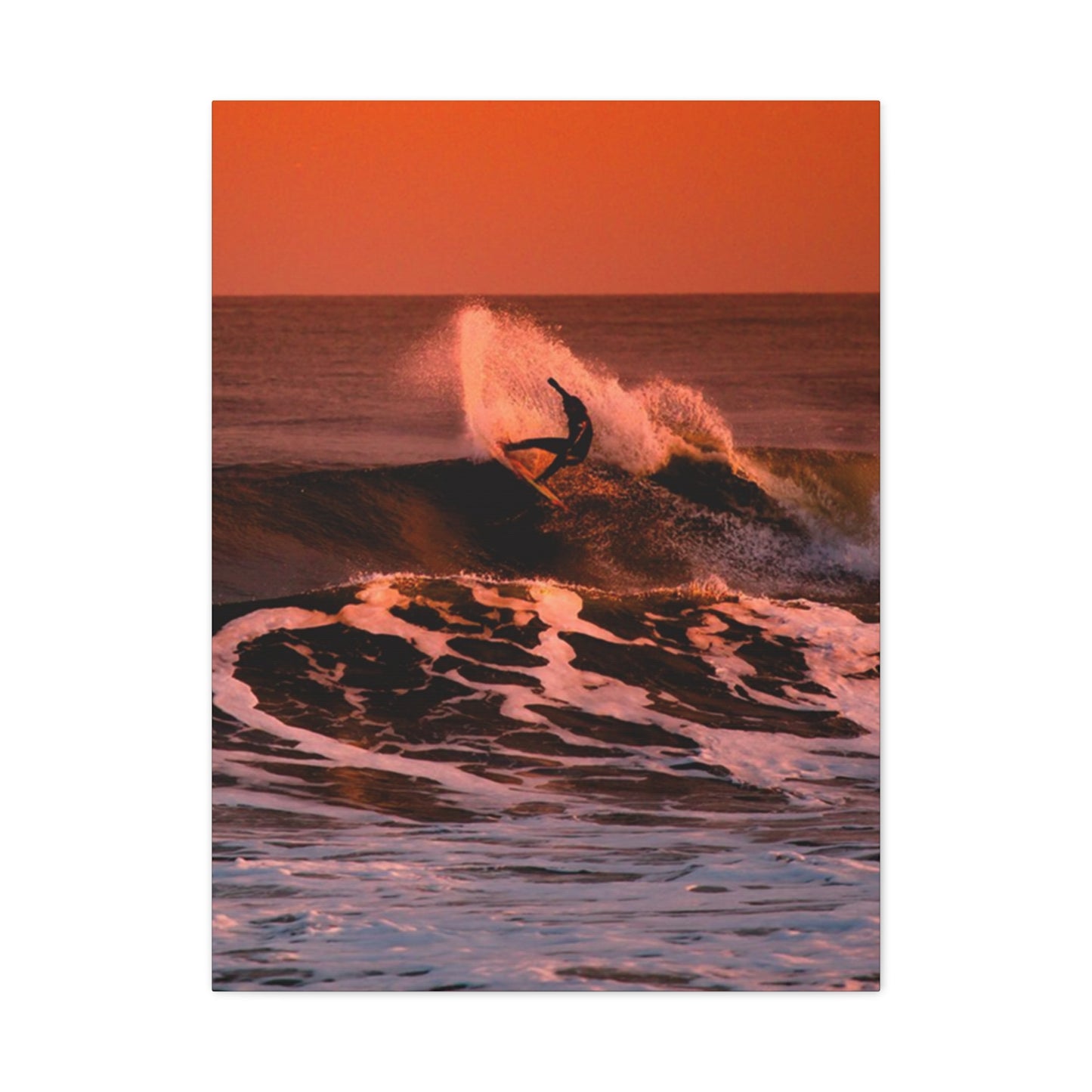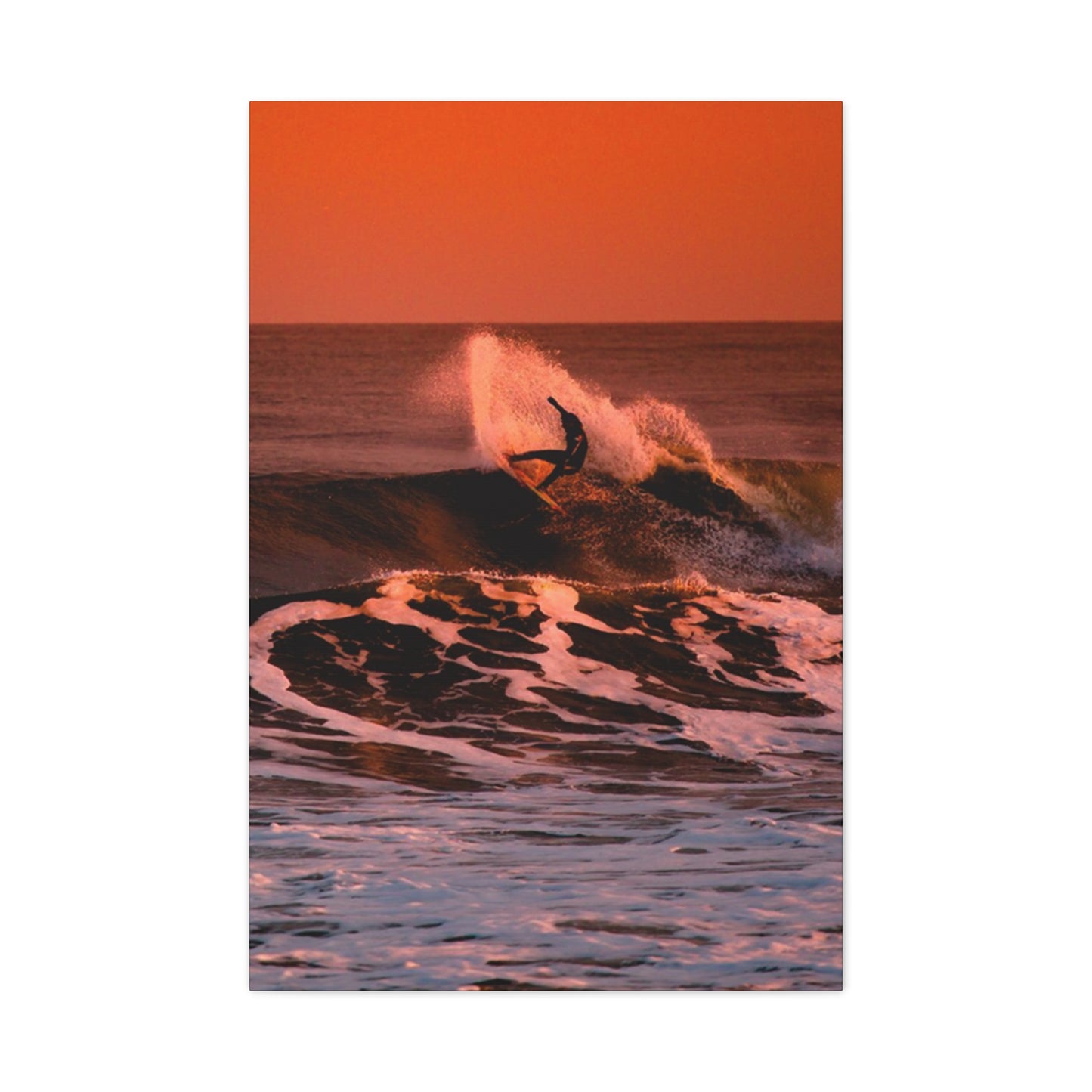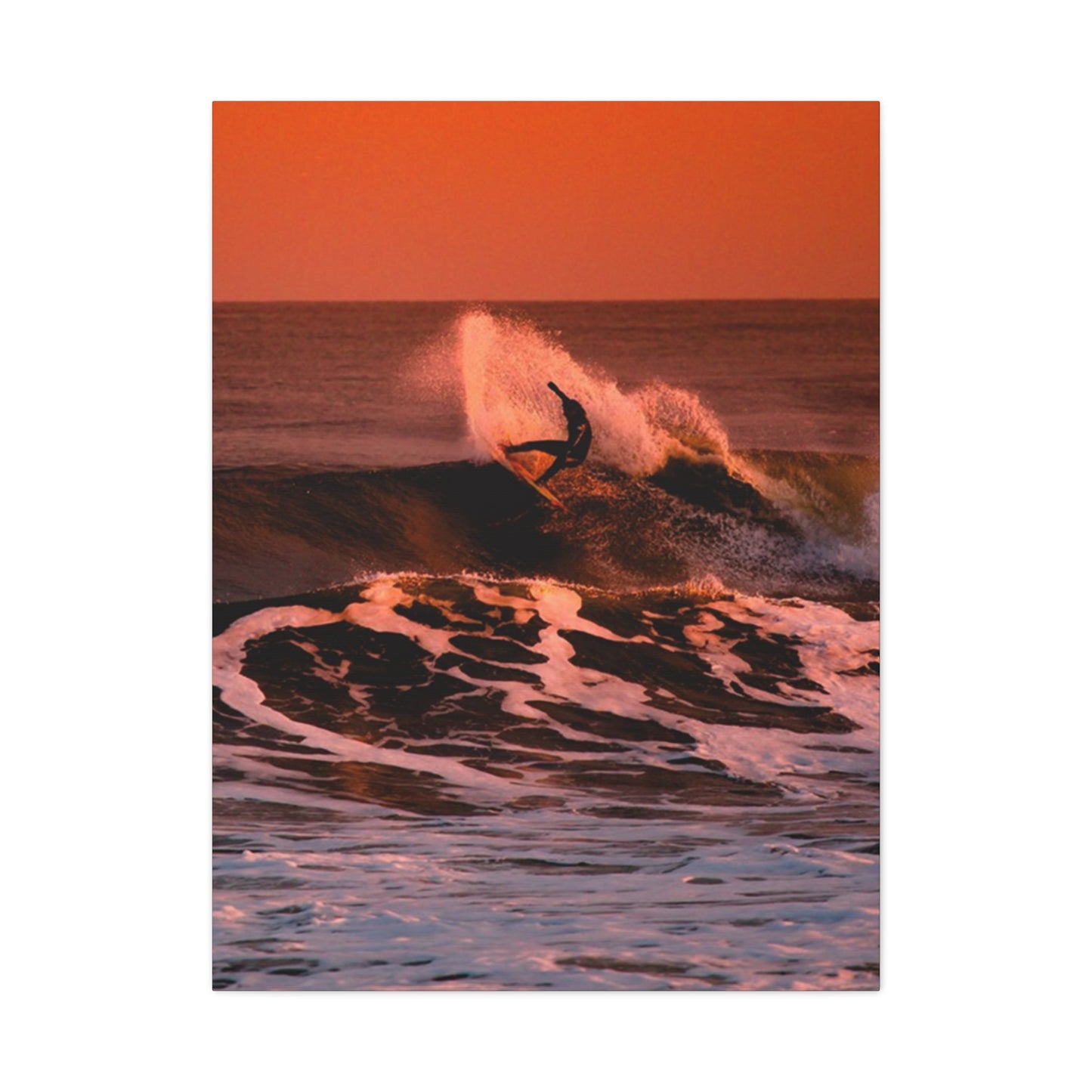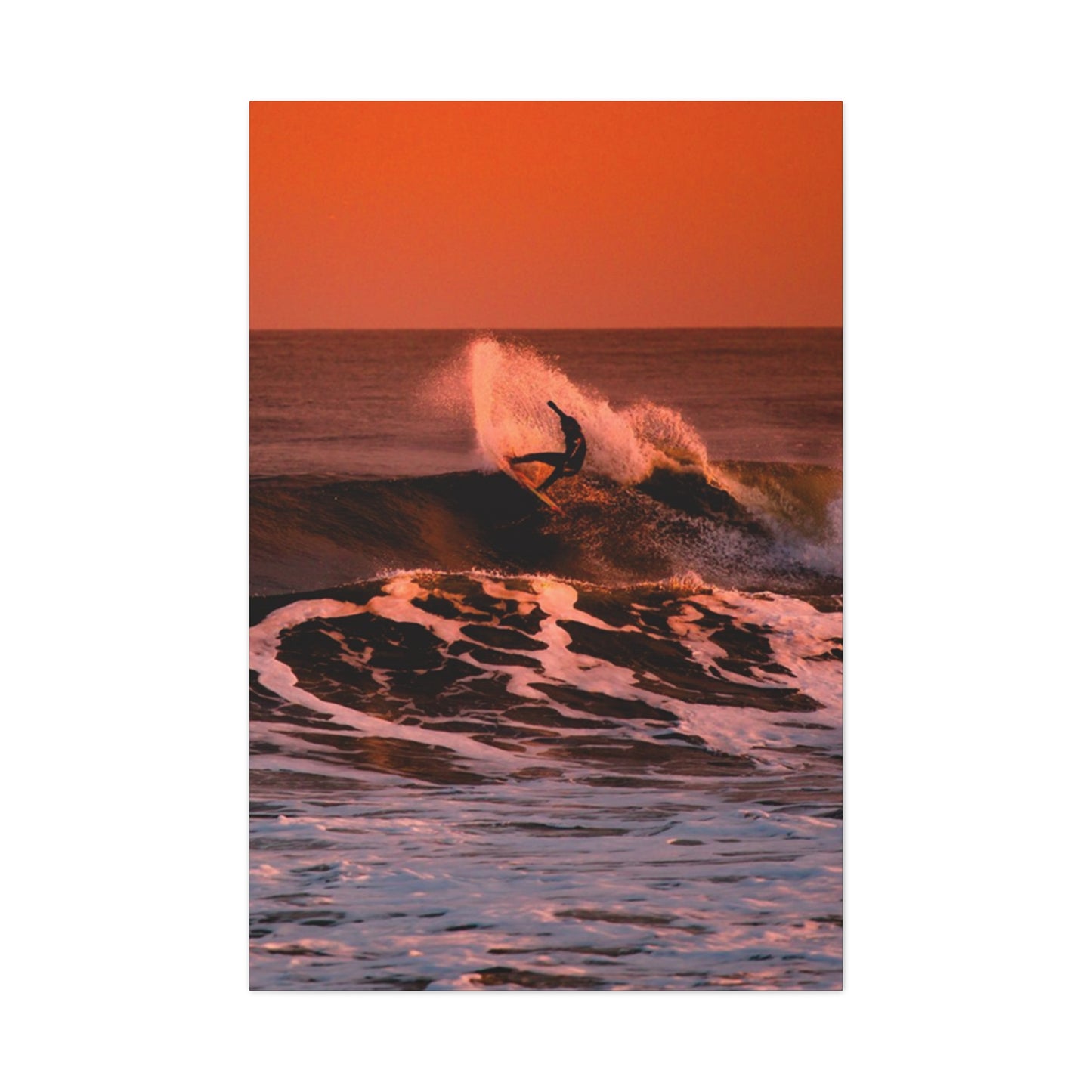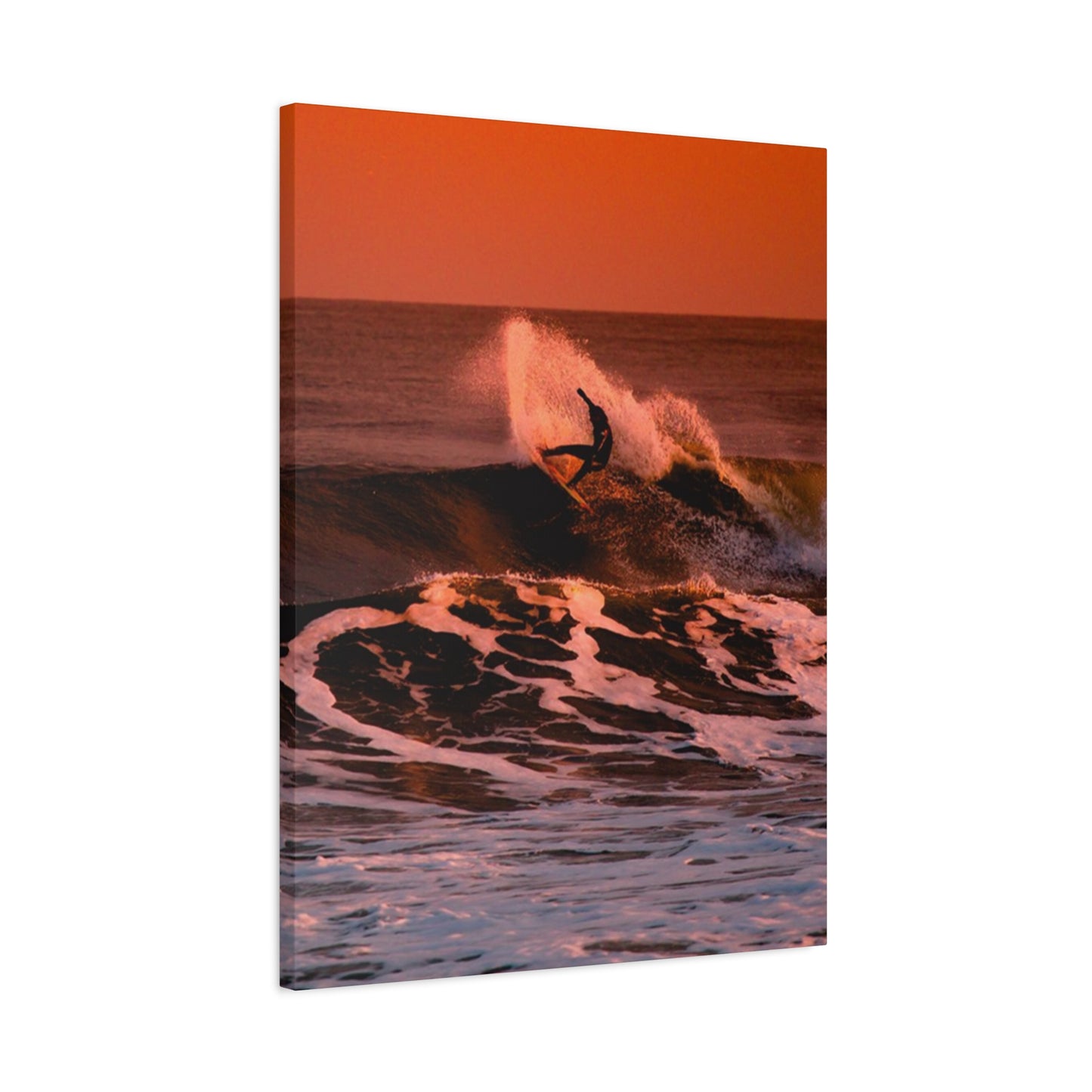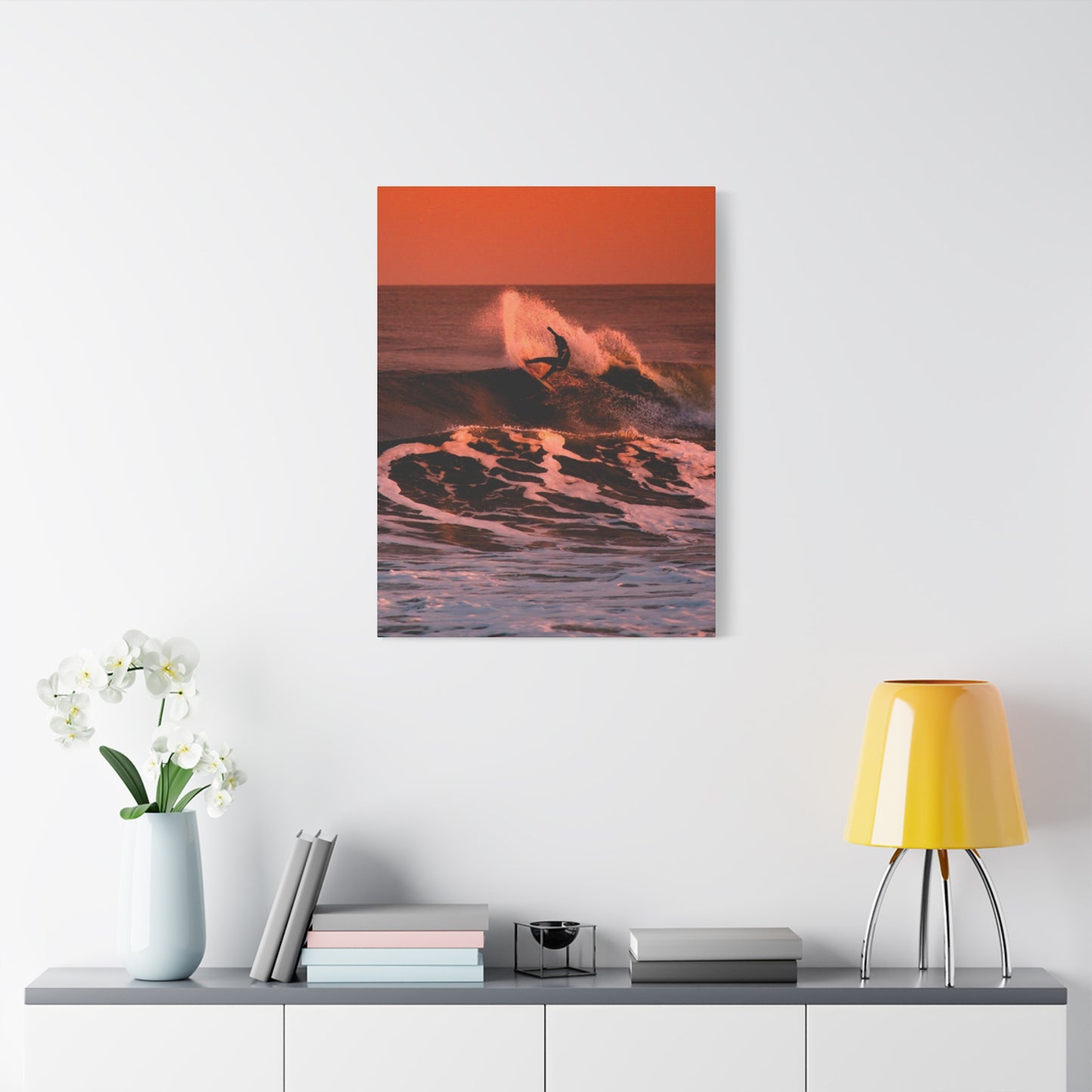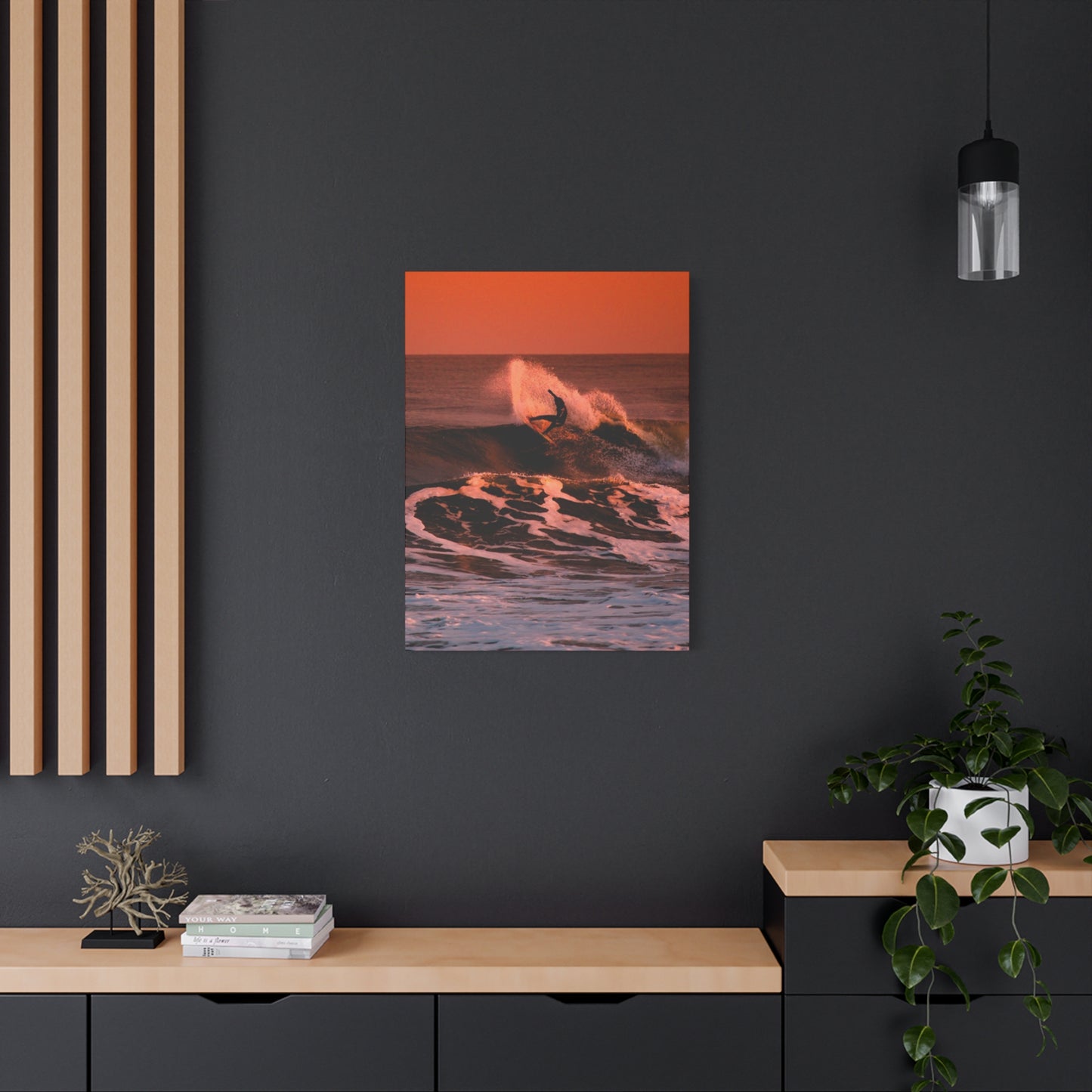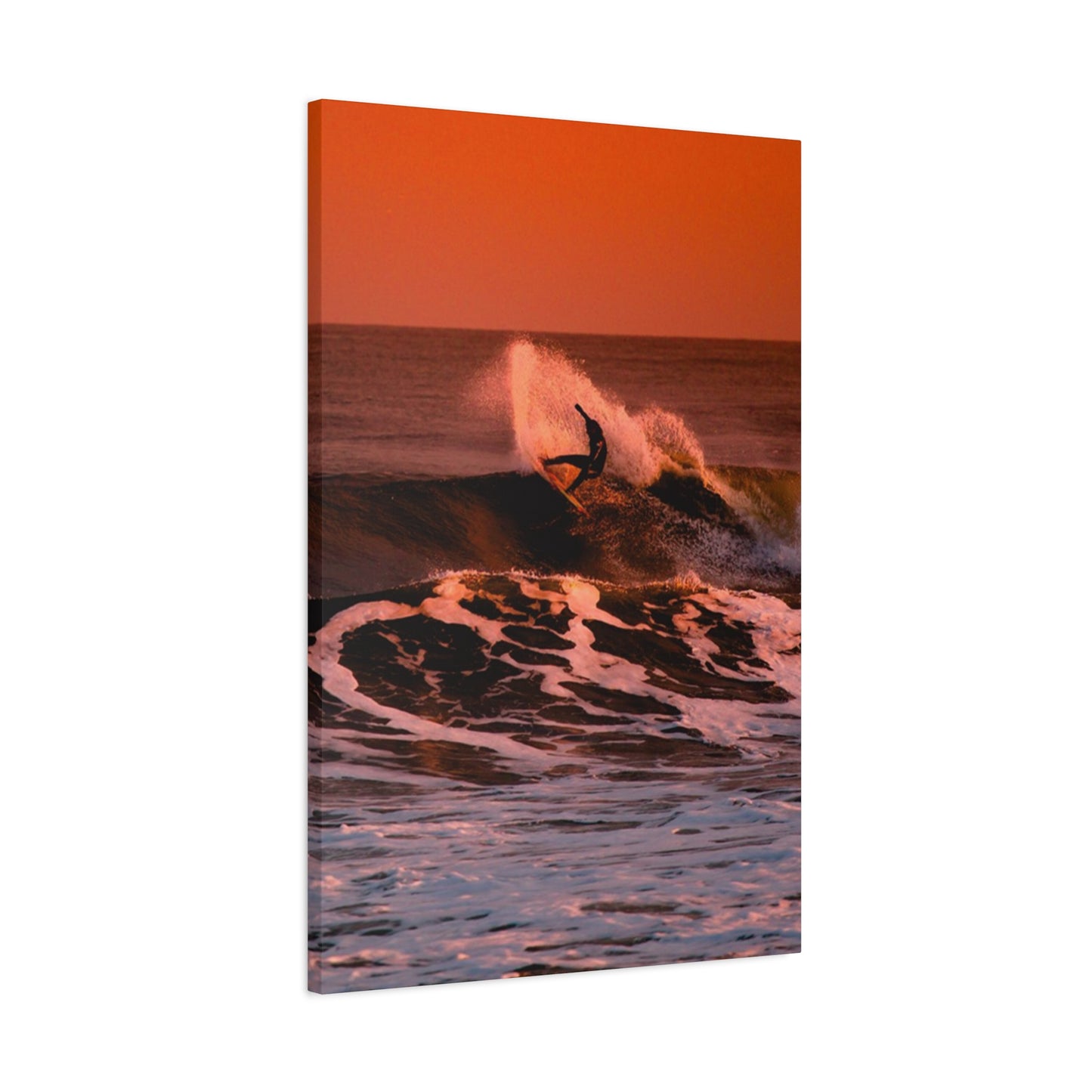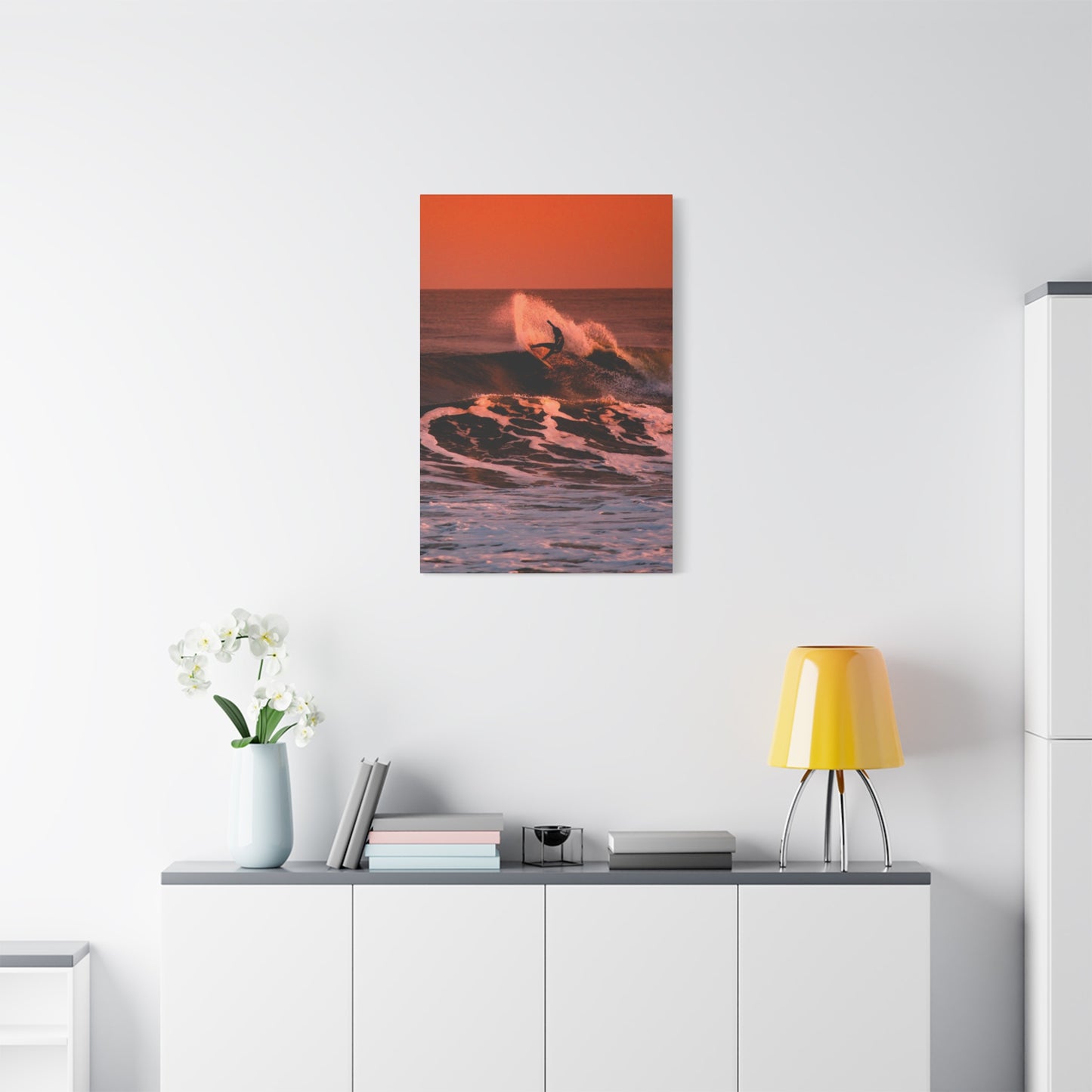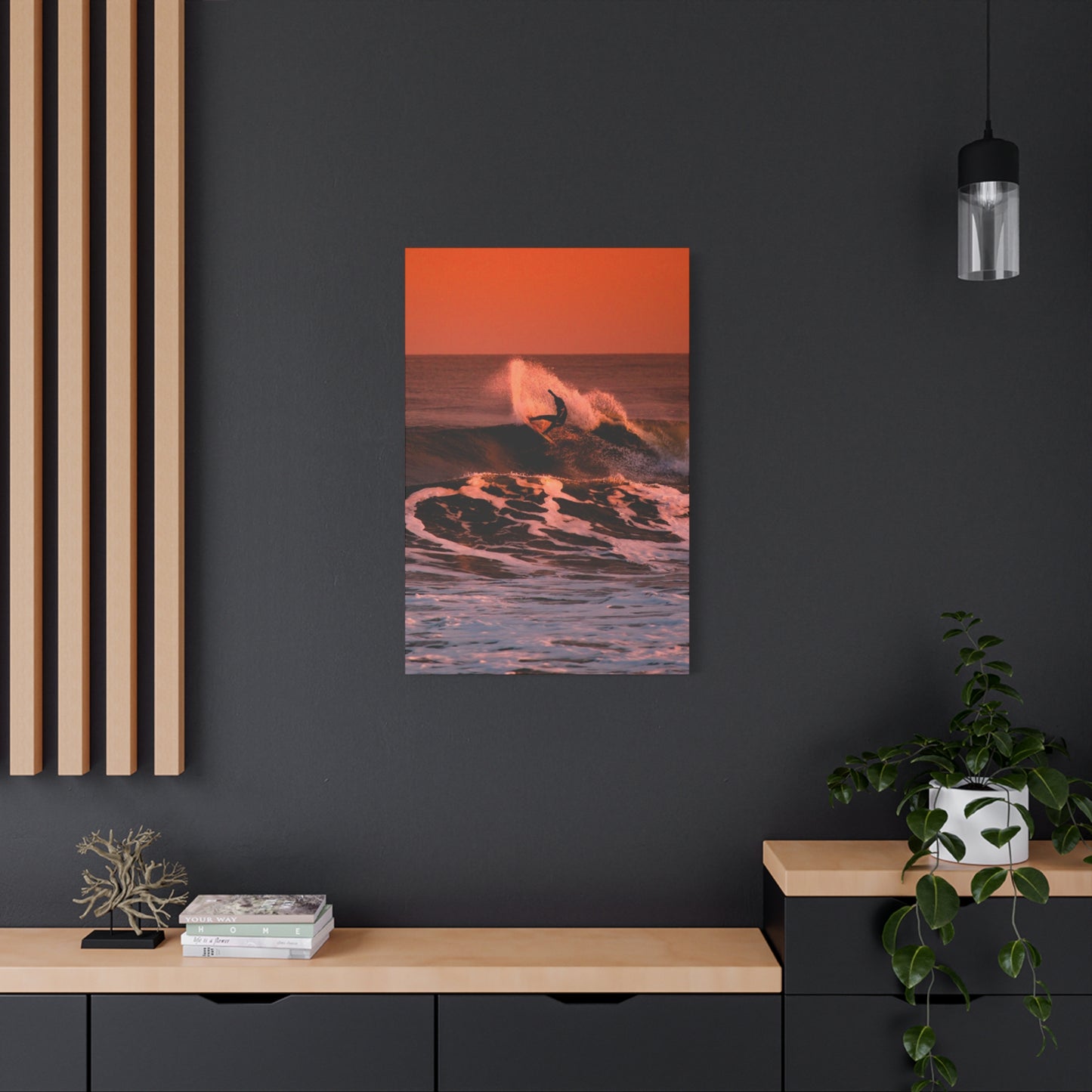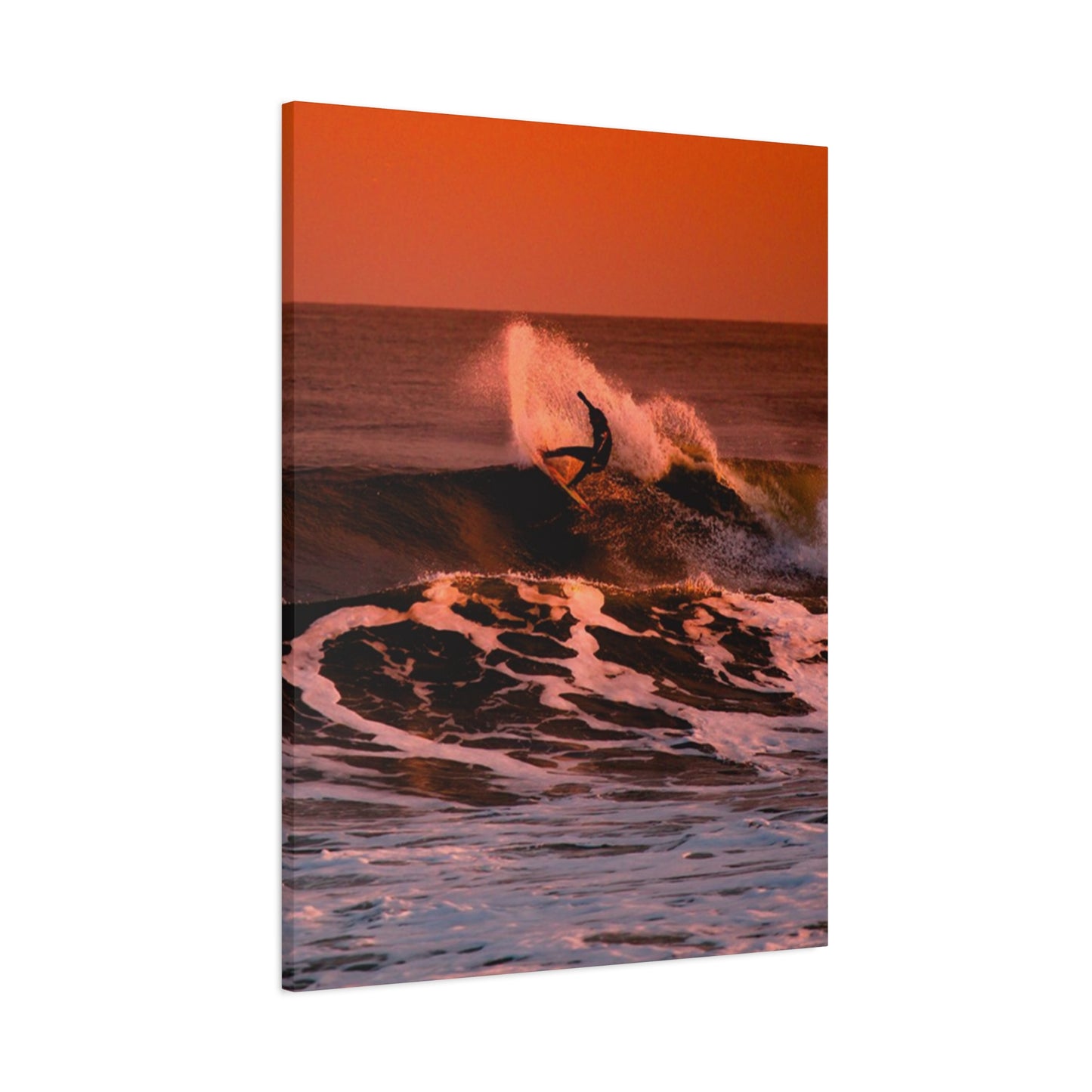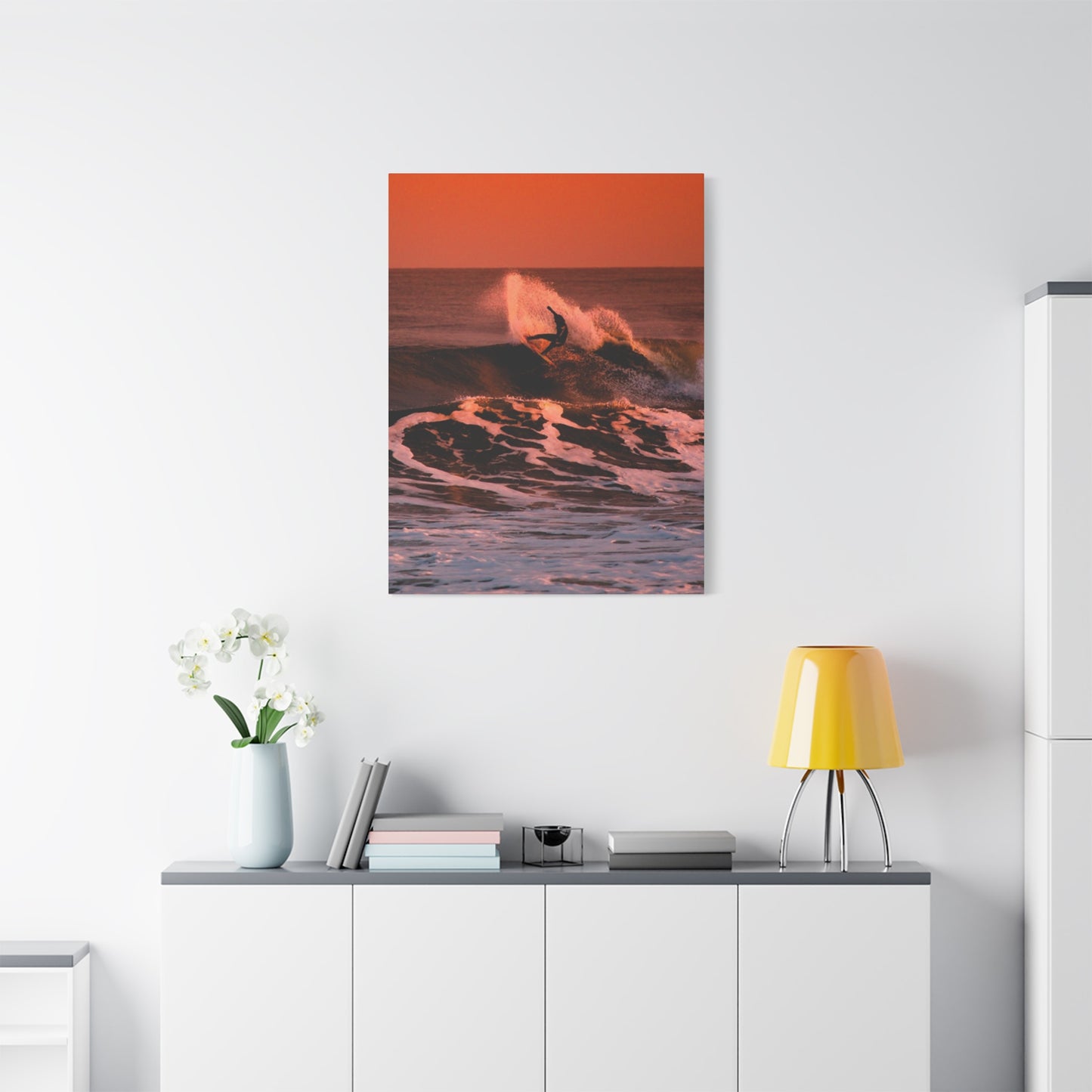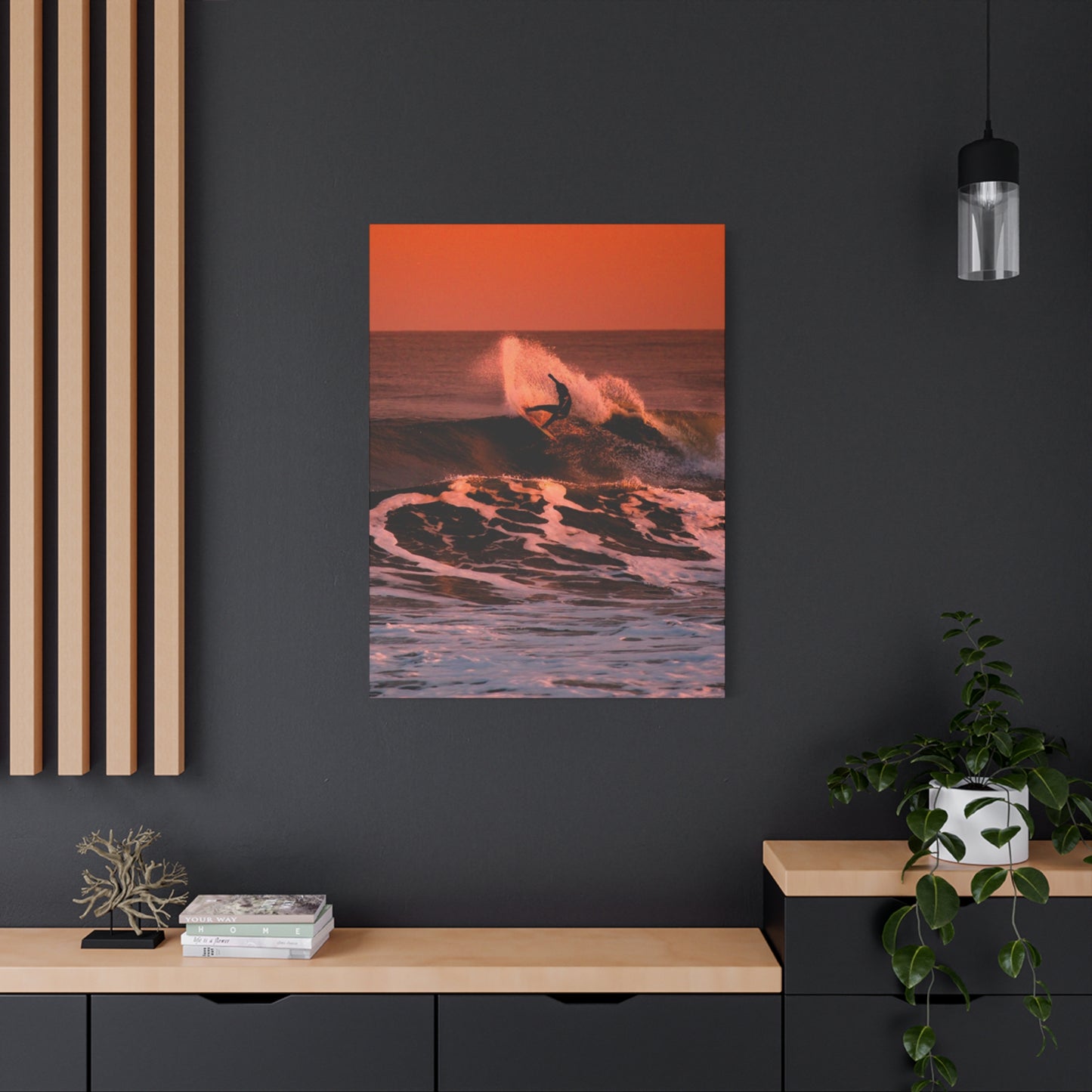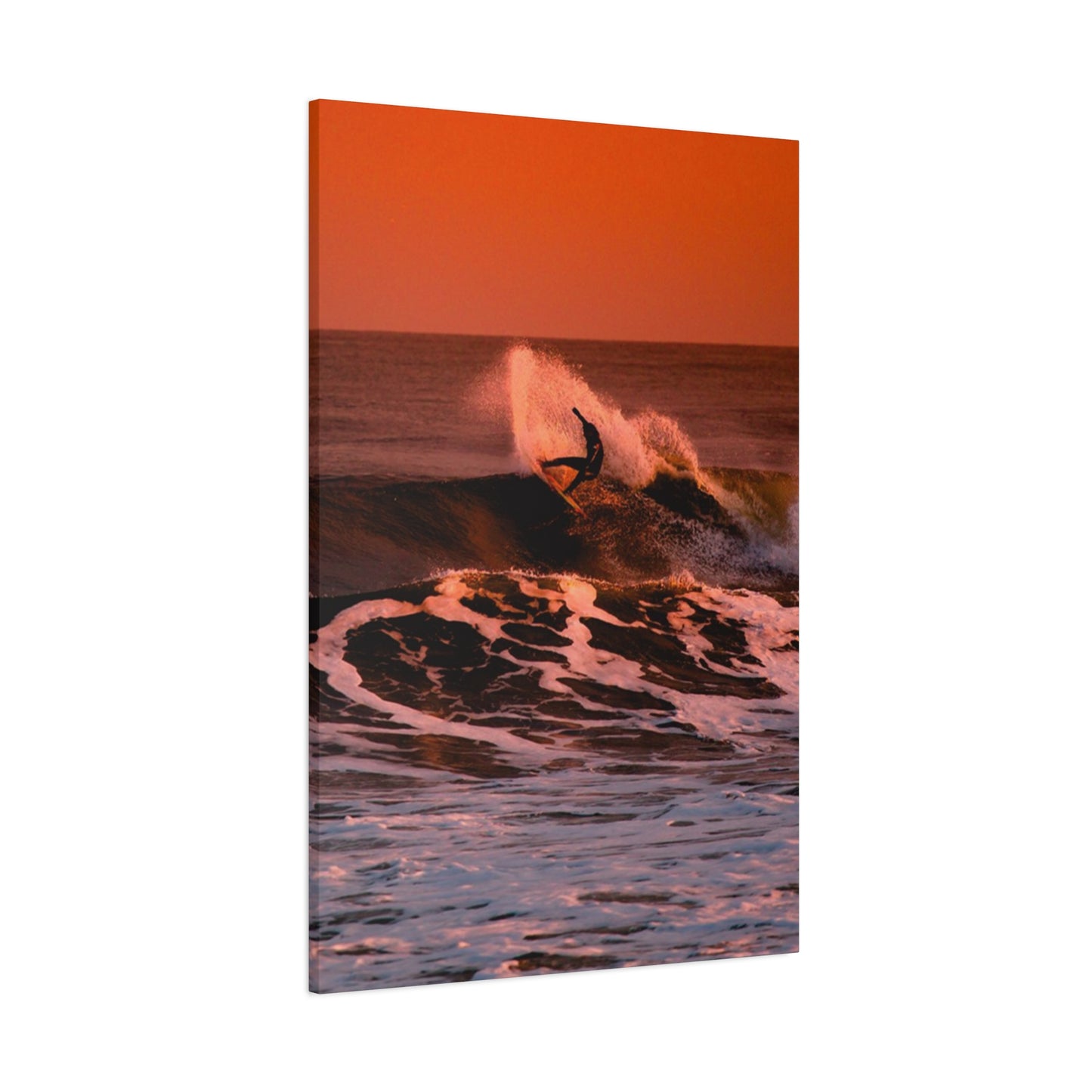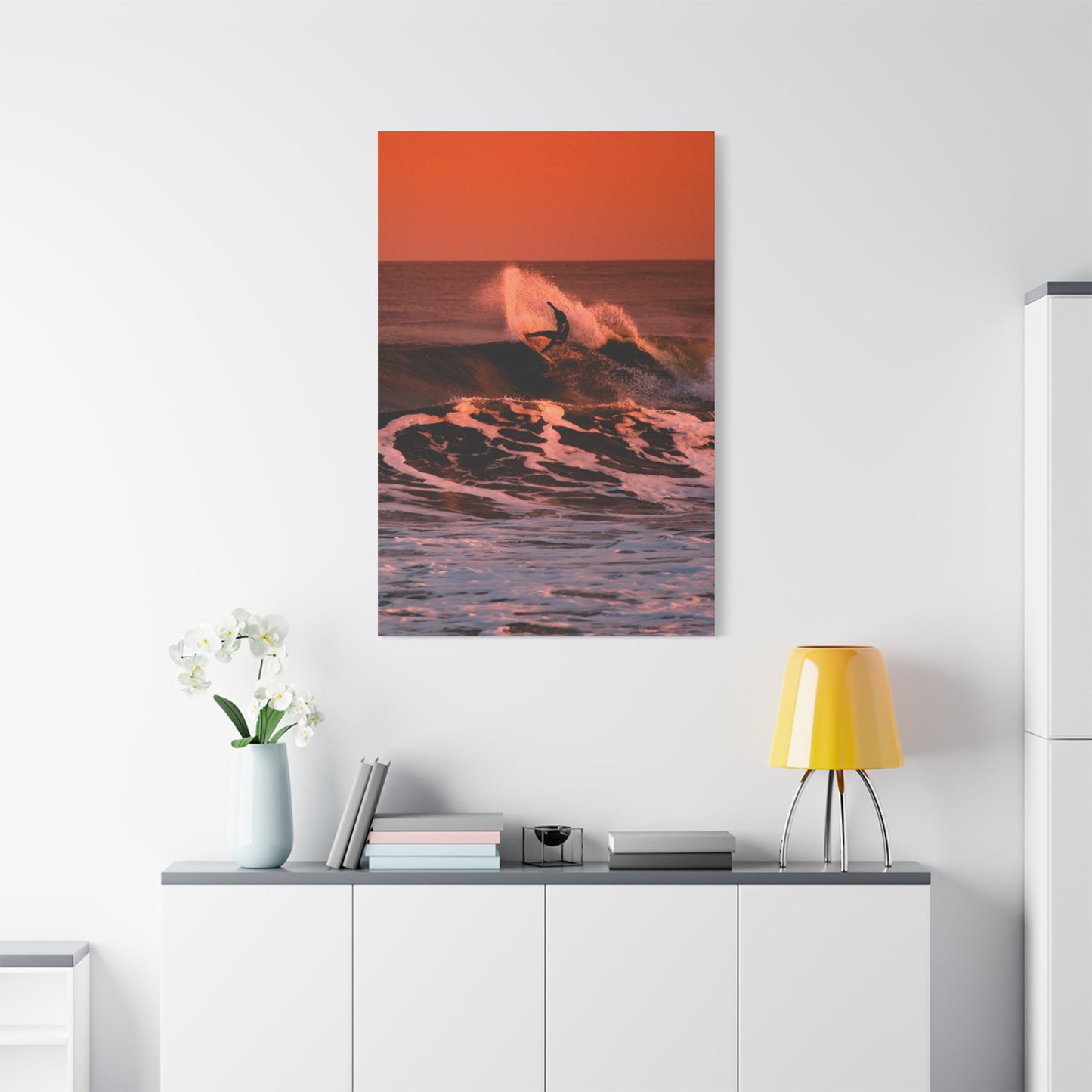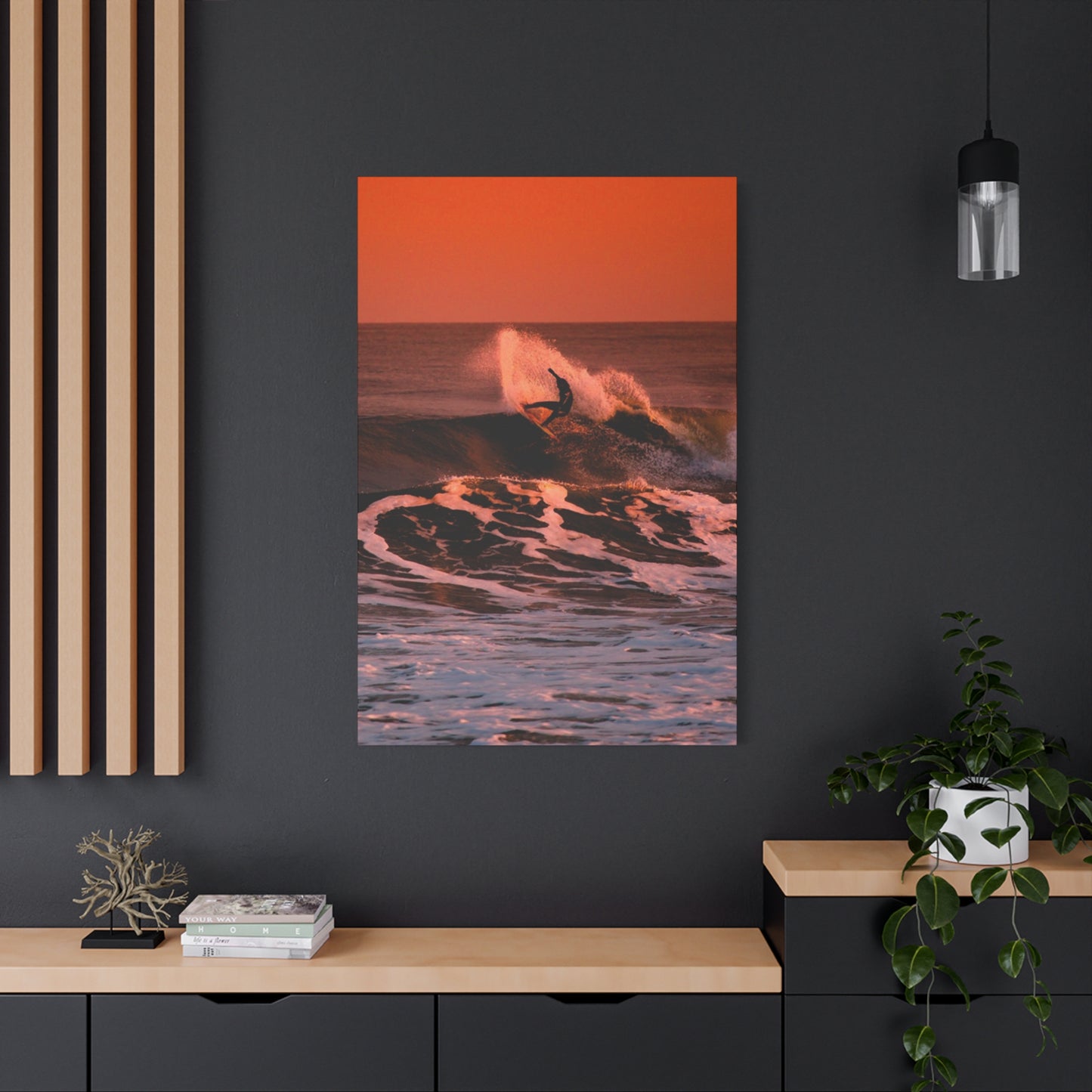Captivating Surf and Sunset Wall Art: A Complete Guide to Ocean-Inspired Decor
The allure of ocean waves meeting the warm glow of a setting sun has captivated artists and art enthusiasts for generations. This timeless combination brings the serenity of beach living into homes, offices, and creative environments. Whether you are drawn to the raw power of crashing waves or the peaceful hues of twilight over the horizon, these visual elements offer endless possibilities for enriching your surroundings. From vibrant photographs to abstract interpretations, the fusion of surf and sunset themes creates a dynamic aesthetic that resonates with coastal lovers and art collectors alike. This comprehensive guide explores fourteen distinct aspects of surf and sunset artwork, offering insights into techniques, styles, and practical applications for incorporating these pieces into your living environment.
The Magic of Golden Hour on Surf Art
Golden hour represents that fleeting window when sunlight transforms everything it touches into pure visual poetry. This phenomenon occurs twice daily, shortly after sunrise and before sunset, when the sun sits low on the horizon and casts a warm, diffused glow across the landscape. For surf artists, this period offers unparalleled opportunities to capture the ocean in its most enchanting state. The angular light during these moments creates long shadows, rich color saturation, and a dreamy quality that elevates ordinary beach scenes into extraordinary visual narratives.
When photographers and painters work with golden hour lighting, they gain access to a natural color palette that cannot be replicated at any other time of day. The sun's rays travel through more of the atmosphere during this period, scattering blue and violet wavelengths while allowing warm oranges, pinks, and golden yellows to dominate. This atmospheric filtering creates those signature honey-toned glows that make golden hour surf photography so recognizable and beloved. Artists who specialize in this niche understand that timing is everything. They position themselves strategically, anticipating how light will interact with wave formations, spray, and the reflective qualities of water.
The magic extends beyond simple color theory. Golden hour light possesses a softness that flatters the contours of waves, revealing texture and dimension without the harsh contrasts present during midday. This quality allows viewers to appreciate the sculptural nature of water in motion. A well-executed golden hour surf piece captures not just the appearance of a wave, but its essence, the way light penetrates translucent portions of the curl, creating luminous greens and blues within the golden framework. These moments of contrast, where cool water meets warm light, generate visual tension that keeps the eye engaged.
Artists working in this genre often spend countless hours studying tide patterns, weather conditions, and seasonal light variations. They know that golden hour in summer differs significantly from winter's version, with the sun's angle and intensity shifting throughout the year. This dedication to understanding natural phenomena separates truly exceptional golden hour surf art from generic beach imagery. The best pieces demonstrate an intimate knowledge of how light behaves, how it refracts through saltwater spray, reflects off wet sand, and silhouettes surfers against the glowing sky.
Collectors gravitate toward golden hour surf art for its ability to evoke specific emotional responses. These pieces carry warmth and optimism, suggesting adventure, freedom, and connection with nature. When displayed in living or working environments, they serve as visual reminders of peaceful moments and the beauty of natural cycles. The popularity of this genre has grown substantially over recent decades, with both emerging and established artists finding eager audiences for their golden hour interpretations. Whether rendered through photography, oil painting, watercolor, or digital media, these works share a common thread of celebrating light's transformative power over ocean landscapes.
Blending Colors in Sunset Ocean Scenes
The art of color blending in sunset ocean compositions requires technical skill and artistic intuition. Successful pieces in this category demonstrate seamless transitions between multiple color families while maintaining visual coherence and emotional impact. Artists must balance warm sunset hues, typically oranges, reds, pinks, and purples, with the cooler tones inherent to ocean water, such as blues, teals, and greens. This interplay creates dynamic compositions that feel both energetic and harmonious.
Traditional painting techniques offer artists various approaches to achieving smooth color gradations. Wet-on-wet oil painting allows colors to merge directly on the canvas, creating natural transitions that mimic atmospheric effects. This method proves particularly effective for rendering the gradual shift from deep purple at the zenith to vibrant orange near the horizon. Watercolorists employ similar principles, allowing pigments to flow and blend on moistened paper, though this medium requires careful planning since corrections prove more difficult than with oils or acrylics. The transparency of watercolor lends itself beautifully to sunset scenes, as layered washes can suggest depth and atmospheric perspective.
Acrylic painters often use glazing techniques to build complex color relationships. By applying thin, translucent layers of paint over dried underlayers, artists create optical mixing effects where colors appear to blend without physically combining. This approach offers more control than wet-on-wet techniques while still achieving soft transitions. Digital artists have access to tools that simulate these traditional methods, with blending brushes and gradient features that allow for precise manipulation of color transitions. However, the most convincing digital sunset ocean scenes still reference the organic qualities found in physical media.
Color theory plays a fundamental role in successful sunset ocean compositions. Complementary colors, those opposite each other on the color wheel, create vibration and visual interest when placed adjacent to one another. Orange sunsets against blue water exemplify this principle, generating natural tension that energizes the composition. Analogous color schemes, using colors adjacent on the color wheel, produce more harmonious, soothing effects. A sunset rendered primarily in oranges, reds, and yellows creates warmth and unity, while a composition emphasizing blues, purples, and magentas feels cooler and more mysterious.
Artists must also consider value relationships when blending colors in sunset scenes. Value refers to the lightness or darkness of a color, and controlling value gradations proves as important as hue selection. A convincing sunset shows gradual value transitions from the bright sky near the sun to darker regions away from the light source. Similarly, water closest to the viewer often appears darker than distant water, which reflects more sky color. These value patterns create depth and atmospheric perspective, helping viewers feel they are looking into a three-dimensional scene rather than at a flat surface.
Temperature contrast adds another layer of complexity to color blending in sunset ocean art. Color temperature, the perceived warmth or coolness of a hue, can be manipulated even within a single color family. A warm blue appears slightly greenish, while a cool blue leans toward purple. Artists skilled in temperature control can create subtle shifts that enhance realism and mood. For instance, water directly reflecting orange sunset light might be rendered with warm turquoise, while shadowed areas use cooler, more purple-tinged blues. These nuanced decisions separate competent work from truly masterful sunset ocean paintings.
The Energy of Waves in Sunset Paintings
Capturing wave energy in sunset paintings presents unique challenges that test an artist's observational skills and technical abilities. Waves represent constant motion, power, and transformation, qualities that must somehow be frozen in a static medium while maintaining their sense of dynamism. When combined with sunset lighting, this challenge intensifies, as artists must convey both movement and specific atmospheric conditions simultaneously. The most successful pieces make viewers feel the rumble of approaching swells, the crash of breaking waves, and the rhythmic pulse of the ocean.
Artists employ various visual strategies to suggest movement in wave paintings. Directional brushstrokes that follow wave contours create flow and momentum, guiding the viewer's eye through the composition. Diagonal lines and curves suggest action more effectively than horizontal or vertical elements, as they imply transition and change. The angle at which a wave breaks, the spray lifted by offshore winds, and the foam patterns trailing behind wave crests all contribute to the perception of energy. Skilled artists observe these details during their field studies and translate them into pictorial elements that read as authentic rather than generic.
The structure of waves themselves offers clues about how to represent their energy. A building swell shows different characteristics than a breaking wave or reformed shorebreak. The face of an approaching wave appears relatively smooth and glassy, with light refracting through its thickness. As the wave reaches critical mass and begins to pitch forward, textures multiply, the surface becomes more complex with wind ripples, spray begins to separate from the main body, and that iconic curl forms. Artists who understand these phases can choose which moment to depict based on the energy level they wish to convey.
Sunset lighting dramatically affects how wave energy reads visually. Backlit waves, where the sun sits behind them relative to the viewer, create silhouettes with glowing edges. This treatment emphasizes form and gesture while simplifying detail, producing bold, graphic compositions. Front-lit waves, illuminated by sunset light facing the viewer, reveal surface textures and color variations but may appear flatter without careful attention to shadow placement. Side lighting often provides the most dramatic results, revealing both form and texture while creating strong value contrasts that enhance three-dimensionality.
Color choices significantly impact the perception of wave energy. Turbulent, powerful waves often call for saturated colors and strong contrasts, vivid oranges against deep blues, bright whites in foam against darker water. More peaceful, gentle waves might be rendered with softer, more harmonious color palettes, pastel pinks and lavenders blending smoothly into muted teals. The temperature of colors also affects perceived energy levels. Warm colors advance visually and feel active, while cool colors recede and appear calmer. Artists manipulate these properties to control how energetic their wave paintings feel.
Scale and composition further influence the communication of wave energy. Large waves dominating the picture plane convey power and magnitude, especially when viewers see them from a low vantage point, as if standing in the water. Multiple waves receding into the distance suggest the relentless, rhythmic nature of ocean swells. Close-up views of wave details, spray droplets catching light, foam patterns, translucent water showing through a curl, create intimate encounters with wave energy on a smaller scale. Each compositional choice serves the artist's vision of how to represent the ocean's kinetic force.
Coastal Vibes in Sunset and Surf Wall Art
Coastal vibes encompass a lifestyle aesthetic that celebrates relaxed beach living, connection with natural environments, and the freedom associated with ocean proximity. Artwork that successfully captures these vibes does more than simply depict seaside subjects. It communicates feelings, attitudes, and values that resonate with people drawn to coastal culture. Sunset and surf pieces that embody authentic coastal vibes become more than decoration, they function as visual representations of a desired lifestyle or cherished memories of time spent near the ocean.
The concept of coastal vibes manifests through various visual elements beyond obvious beach imagery. Color palettes inspired by natural coastal environments, weathered wood grays, sun-bleached whites, ocean blues, sandy beiges, and sunset corals, immediately evoke seaside associations. These colors appear throughout successful coastal artwork, sometimes literally depicting their sources, other times functioning as abstract color fields that suggest rather than illustrate. The prevalence of these hues in coastal-themed pieces creates instant recognition and emotional connection for viewers familiar with beach environments.
Texture plays a significant role in communicating coastal vibes. Visual and actual texture reminiscent of natural materials found in beach settings, rough driftwood, smooth sea glass, gritty sand, weathered rope, adds authenticity and tactile interest. Artists working in mixed media often incorporate actual beach materials into their pieces, shells, sand, fishing nets, creating literal connections to coastal environments. Even in traditional painting or photography, suggesting these textures through technique and subject matter strengthens the coastal feel. Heavily textured paint application might evoke rough surf, while smooth gradations suggest calm water or polished pebbles.
Subject matter choices extend beyond waves and sunsets to encompass the full spectrum of coastal life. Sailboats, surfboards, beach grass, seabirds, lighthouses, piers, beach huts, and coastal vegetation all contribute to comprehensive coastal narratives. The inclusion of human elements, surfers waiting for waves, beachcombers walking shorelines, children playing in shallow water, adds relatable, lifestyle-oriented dimensions to the work. These human touches help viewers imagine themselves within the scene, strengthening the aspirational quality that makes coastal art so appealing to people living far from ocean environments.
Composition and perspective choices influence how effectively artwork communicates coastal vibes. Horizontal formats naturally complement beach scenes, echoing the long, low horizon lines characteristic of coastal landscapes. Elevated viewpoints looking down at beaches or out to sea create that expansive, liberating feeling associated with coastal vistas. Lower angles, such as views from the sand looking up at a pier or out at incoming waves, generate more intimate, immersive experiences. Artists select perspectives that support their specific vision of coastal living, whether emphasizing grandeur and freedom or focusing on quiet, contemplative moments.
The emotional tone of coastal vibe artwork tends toward the positive, uplifting, and peaceful. While the ocean certainly has dramatic and dangerous aspects, pieces emphasizing coastal lifestyle aesthetics typically highlight beauty, tranquility, adventure, and joy. This doesn't mean avoiding all energy or drama, vibrant sunset colors and powerful waves absolutely fit the coastal vibe when rendered with an eye toward celebration rather than threat. The overall feeling should invite viewers to imagine themselves in these environments, experiencing the physical and emotional benefits of coastal living. This aspirational quality makes coastal sunset and surf art particularly popular in urban settings, where it provides daily reminders of alternative lifestyles and escape possibilities.
Using Texture to Depict Surf Movement
Texture serves as a powerful tool for artists seeking to convey the movement and character of surf in their work. Unlike smooth, static surfaces, textured applications create visual interest, suggest three-dimensionality, and can evoke the tactile qualities of water, foam, and spray. The strategic use of texture transforms flat canvases into dynamic surfaces that engage viewers both visually and imaginatively. When applied thoughtfully to surf subjects, texture becomes more than a technical consideration, it becomes integral to the artistic message.
In traditional painting, artists have numerous techniques available for creating texture. Impasto, the application of thick paint that stands up from the canvas surface, proves particularly effective for depicting turbulent water and foamy wave crests. When painted with palette knives or stiff brushes, heavy paint retains the marks of these tools, creating directional textures that can suggest water movement. A palette knife dragged across a canvas might represent the smooth, glassy face of a wave, while stippling thick white paint creates convincing foam texture. Oil and acrylic paints both support impasto techniques, though oils remain workable longer, allowing for extended manipulation.
Glazing and scumbling techniques offer additional textural possibilities. Glazing involves applying thin, transparent layers of paint over dried underlayers, gradually building depth and complexity. While individual glaze layers are smooth, their cumulative effect creates optical texture through color variation and luminosity shifts. Scumbling, dragging dry paint lightly across a textured surface so it catches only on raised areas, creates broken color effects ideal for suggesting spray, foam patterns, and light reflecting off moving water. These techniques require patience and planning but yield sophisticated results difficult to achieve through direct painting alone.
Mixed media approaches expand textural possibilities even further. Artists might incorporate actual sand, crushed shells, or salt into their paint to create literal beach textures. Collage elements, torn paper, fabric, or found materials, add dimensional variety and conceptual depth. Some artists use modeling paste or texture gels to build up surface areas before painting, creating predetermined texture patterns that guide subsequent color application. These dimensional additions cast actual shadows, changing appearance as lighting conditions shift, adding a temporal dimension to static artwork.
Photography and digital art face different challenges when depicting texture. Photographers rely on lighting to reveal surface textures in their subjects. Raking light, coming from acute angles, emphasizes every bump, ripple, and irregularity on water surfaces. Macro photography allows extreme close-ups of wave details, revealing textures invisible to the naked eye. In post-processing, photographers can enhance texture through sharpening, clarity adjustments, and contrast manipulation, though overdoing these techniques can produce unnatural results. The key lies in revealing inherent textures rather than inventing them.
Digital artists have access to texture brushes and overlays that simulate traditional media effects or create entirely new textural possibilities. Layering techniques in digital software allow for complex texture combinations, perhaps a photographic texture of actual water overlaid with painted elements, or multiple brush types building cumulative texture effects. While digital tools offer tremendous control and editability, the most convincing digital surf art often draws inspiration from traditional media, maintaining the organic, unpredictable qualities that make handmade art compelling.
The direction and pattern of texture application significantly affect how movement reads in surf art. Horizontal textures suggest calm, lateral water movement, while vertical or diagonal textures imply falling water or upward spray. Circular or spiral patterns can indicate turbulence or whirlpools. Random, chaotic textures communicate rough, stormy conditions, while organized, rhythmic patterns suggest orderly swells. Artists must think about how texture direction guides the viewer's eye through the composition and reinforces the narrative of water in motion. Texture becomes not just surface treatment but a language for communicating specific types of movement and energy.
Sunset Reflections on Water in Art
Water reflections present fascinating artistic challenges, requiring careful observation and technical skill to render convincingly. When sunset conditions prevail, reflections become even more complex and visually striking. The warm colors of sunset skies mirror in water surfaces, but not as simple copies. Wind, waves, currents, and viewing angle all affect how reflections appear, creating opportunities for artists to demonstrate their understanding of optical phenomena and their ability to translate observation into compelling imagery.
Perfectly calm water acts as a mirror, creating nearly symmetrical reflections of sky and any objects above the waterline. In these conditions, sunset reflections appear as inverted versions of the sky, though typically slightly darker and less saturated than the original. Artists depicting glassy water must pay attention to value shifts between sky and reflection, as even minor differences affect believability. The reflection also compresses vertically from the viewer's perspective, a phenomenon related to viewing angle and the water plane's orientation. These subtle adjustments separate amateur attempts from professional-quality reflection rendering.
When water surfaces become disturbed by wind or current, reflections break up into patterns determined by wave structure and light angle. Small ripples create shimmering effects, with each ripple face reflecting light from a slightly different angle, producing those characteristic sparkle paths across water surfaces. During sunset, these sparkle paths glow with concentrated color, creating luminous ribbons that lead the eye through compositions. Artists capturing this effect must decide how much detail to include, too much can become chaotic, too little fails to convince. Finding the balance requires judgment developed through observation and practice.
Larger waves create more dramatic reflection distortions. The curved surfaces of swells reflect different portions of the sky, with wave faces potentially showing sunset colors while troughs remain darker, reflecting overhead sky or nothing at all if angled away from the viewer. Breaking waves disrupt reflections entirely, replacing them with foam and spray that may catch sunset light in different ways. Artists working with active surf must choreograph these elements, deciding which receive emphasis and how they relate spatially and tonally to sky elements above.
Color in water reflections proves more complex than simple duplication. Water adds its own color to whatever it reflects, so sunset reflections appear modified by underlying water color. Blue ocean water reflecting orange sunset produces different hues than green harbor water reflecting the same sky. Artists must mix colors that account for this additive effect, creating reflected hues that feel related to but distinct from sky colors. Additionally, particulates in water, sediment, algae, plankton, affect reflection quality, potentially softening clarity or shifting color temperature.
Artistic license allows for creative interpretation of reflections beyond literal representation. Many successful sunset water pieces exaggerate reflection colors for emotional impact or simplify complex patterns for compositional clarity. Abstract interpretations might reduce reflections to essential color relationships or gesture, communicating feeling rather than precise optical phenomena. Even realistic pieces involve selective editing, choosing which details to emphasize and which to minimize. The goal involves capturing the essence and emotional truth of sunset reflections rather than creating photographic duplicates.
Technical execution varies across media. Oil painters might use smooth, blended transitions for calm water reflections or broken, directional strokes for disturbed surfaces. Watercolorists can achieve luminous reflection effects through layered transparent washes, allowing white paper to shine through and suggest light on water. Photographers control reflection appearance through shutter speed, long exposures smoothing water surfaces and reflections, short exposures freezing ripple details. Polarizing filters affect reflection intensity, potentially reducing or eliminating reflections to reveal what lies beneath water surfaces. Each medium offers unique capabilities for interpreting water reflections during sunset conditions.
Minimalist Sunset and Surf Prints
Minimalism in art emphasizes simplicity, reduction, and essential elements over decorative complexity. When applied to sunset and surf subjects, minimalist approaches strip away extraneous details, focusing on fundamental forms, colors, and compositions. This aesthetic has gained considerable popularity in contemporary decor, offering clean, uncluttered visual statements that complement modern environments. Minimalist sunset and surf prints provide the emotional resonance of ocean themes without overwhelming viewers or competing with other design elements in a room.
Color palette reduction defines many minimalist surf and sunset pieces. Rather than depicting the full spectrum of colors present in actual scenes, artists limit themselves to two, three, or four carefully chosen hues. A minimalist sunset might consist only of a gradient from peach to deep blue, eliminating clouds, texture, and middletone complexity. This restraint forces viewers to focus on color relationships and emotional tone rather than representational details. The simplicity creates a meditative quality, encouraging contemplation rather than detailed examination.
Geometric simplification transforms organic beach subjects into basic shapes. A sunset becomes a perfect circle, waves become curved lines, and the horizon appears as a single straight division between sea and sky. This reductionist approach emphasizes the underlying structure of scenes rather than surface appearances. While less literally realistic, geometric minimalism can capture essential truths about subjects, the roundness of the sun, the horizontal expanse of ocean, the rhythmic curves of swells. These simplified forms possess timeless quality and broad appeal, transcending specific locations or moments.
Negative space, areas of artwork left empty or minimal, plays a crucial role in minimalist compositions. Rather than filling every inch of the picture plane, minimalist artists embrace emptiness as an active compositional element. A small, simple wave form might occupy only a fraction of the print, surrounded by expansive solid color fields. This use of negative space creates visual breathing room, directing attention to the few elements present while suggesting vast, open environments. The empty areas become as important as the marks or shapes, contributing to the overall feeling and meaning.
Line quality in minimalist surf prints tends toward clean, decisive marks rather than sketchy or expressive handling. Whether curved lines suggesting waves or straight lines defining horizons, these elements appear confident and refined. Some minimalist pieces use only line work, eliminating solid shapes or color fills entirely. Contour drawings of waves, for instance, can capture form and movement through economical linework alone. The precision and intentionality of these lines communicate control and sophistication, aligning with minimalist aesthetics that value clarity and deliberation.
Texture generally receives minimal emphasis in this style, though some artists incorporate subtle texture for visual interest while maintaining overall simplicity. A print might feature smooth color fields with barely perceptible grain or slight variations that prevent complete flatness without introducing obvious texture. This restrained approach maintains minimalist integrity while avoiding the sterile, overly digital appearance that sometimes plagues minimalist work. The key involves adding just enough texture to create visual warmth and handmade quality without violating simplicity principles.
Minimalist sunset and surf prints work particularly well in specific contexts. Modern, contemporary, and Scandinavian-influenced environments benefit from their clean aesthetics and uncluttered compositions. These pieces pair effectively with neutral color schemes, allowing the artwork's limited palette to provide color accents without overwhelming. In smaller rooms or areas with many furnishings, minimalist art prevents visual overcrowding. They also serve well in professional settings where bold, detailed art might seem inappropriate but where some visual warmth and personality remain desirable. The versatility and adaptability of minimalist ocean themes explain their sustained popularity across various residential and commercial applications.
Beach Life Captured in Sunset Art
Beach life encompasses far more than ocean and sky, it includes the human activities, cultural traditions, and lifestyle elements that make coastal areas distinctive. Artwork that captures beach life in sunset settings tells richer, more complete stories than pieces focusing solely on natural elements. These works document and celebrate the ways people interact with beach environments, from recreational activities to quiet moments of reflection. By including human elements in sunset compositions, artists create narrative depth and provide viewers with relatable entry points into the scenes.
Surfing represents perhaps the most iconic beach life activity depicted in sunset art. Silhouettes of surfers paddling out through golden light, riding waves backlit by the setting sun, or walking along beaches with boards under their arms instantly communicate the surf lifestyle. These images celebrate athleticism, connection with nature, and the pursuit of perfect waves. The contrast between human figures and vast ocean expanses emphasizes both the challenge surfers face and their harmonious relationship with powerful natural forces. Sunset timing adds emotional weight, suggesting dedication, those who surf at day's end or beginning, and the reward of beautiful conditions.
Beach recreation beyond surfing provides equally rich subject matter. Families building sandcastles as the sun lowers, children splashing in shallow water with sunset reflections around them, beach volleyball games in golden light, people walking dogs along the waterline, all these activities characterize beach life. Artists including these elements create warmth and relatability, helping viewers recall their own beach experiences or imagine future visits. The universal appeal of leisure and play in beautiful settings makes such imagery broadly accessible regardless of viewers' personal relationships with surfing or ocean sports.
Sunset moments often coincide with social gatherings at beaches. Groups collecting around bonfires, couples walking hand-in-hand along sunset shores, friends gathered on jetties watching the sun disappear, these communal experiences form important aspects of beach culture. Artwork depicting these interactions celebrates relationships and shared experiences, adding emotional dimensions beyond aesthetic appreciation of natural beauty. The warm glow of sunset naturally complements themes of connection, friendship, and romance, making these subjects particularly effective in sunset-lit compositions.
Coastal work life appears less frequently but offers interesting artistic possibilities. Fishermen heading out or returning at sunset, lifeguards at their posts during golden hour, pier workers, beach maintenance crews, these subjects acknowledge that beaches function as workplaces for some communities. Including working people in sunset beach art grounds the imagery in reality and honors the labor that supports recreational beach use. These pieces can carry documentary value while maintaining aesthetic appeal, recording aspects of coastal life that might otherwise go unnoticed.
Solitary figures in beach sunset scenes create contemplative moods. A single person standing at the water's edge, sitting on rocks watching the horizon, or walking alone along vast empty beaches suggests introspection, peace, and personal connection with nature. These compositions allow viewers to project themselves into the scenes, imagining their own thoughts and feelings in similar circumstances. The combination of sunset beauty and solitary human presence often evokes themes of meaning, perspective, and life's larger questions, lending philosophical weight to what might otherwise be simple beach imagery.
The inclusion of beach life elements requires compositional consideration to maintain balance. Human figures can easily dominate compositions if not sized and placed thoughtfully relative to landscape elements. Artists must decide whether figures serve as main subjects with sunset as backdrop, or whether the natural setting dominates with humans as scale indicators or narrative elements. Color choices affect this balance too, silhouetted figures against bright sunsets become graphic elements integrated into color patterns, while fully detailed, illuminated figures function as distinct subjects within larger scenes. These decisions shape how viewers experience and interpret the artwork.
Sunsets and Surf in Abstract Canvas Art
Abstract art liberates artists from representational accuracy, allowing exploration of sunset and surf themes through color, form, texture, and gesture rather than literal depiction. Abstract approaches to these subjects can capture feelings, energy, and essence in ways that realistic rendering sometimes cannot. By distilling experiences of sunset and surf to their emotional and sensory cores, abstract artists create works that engage viewers on intuitive rather than intellectual levels. This freedom produces tremendous variety within the abstract surf and sunset category, from barely abstracted pieces retaining recognizable elements to completely non-representational work inspired by but not depicting these themes.
Color field painting applies naturally to sunset subjects, as actual sunsets consist largely of expansive color areas. Abstract artists might create large canvases dominated by horizontal bands or gradual transitions of sunset-inspired colors, peach melting into lavender melting into deep blue, without including sun, horizon, or any recognizable elements. These pieces evoke sunset feelings through pure color relationships and proportions. The absence of representational content allows colors to function emotionally and aesthetically without competing with subject matter for viewer attention. Color becomes the subject itself, not a means of describing something else.
Gestural abstraction offers dynamic approaches to surf subjects. Bold, sweeping brushstrokes in blues, whites, and greens suggest wave movement without depicting specific waves. Splattered paint might evoke spray and foam, while layered translucent passages create depth reminiscent of looking through water. The physical energy of painting, the speed and force with which paint hits canvas, parallels the energy of surf itself. Action painting techniques pioneered by artists like Jackson Pollock find natural application in surf themes, where controlled chaos and powerful movement align perfectly with gestural mark-making.
Geometric abstraction transforms organic sunset and surf subjects into arrangements of shapes, lines, and planes. Circles or semi-circles might suggest the sun, curved bands indicate waves, horizontal divisions represent sea and sky boundaries. By reducing scenes to geometric essentials, artists create ordered, balanced compositions that feel modern and sophisticated. These pieces work particularly well in contemporary settings where their clean edges and structured designs complement architectural elements. The intellectual quality of geometric abstraction provides counterpoint to the emotional spontaneity of gestural approaches, offering alternative ways to engage with surf and sunset themes.
Texture plays significant roles in abstract surf and sunset work, often becoming a primary means of communication when representational clues are minimal. Heavy impasto creates three-dimensional surfaces that catch light and cast shadows, changing appearance throughout the day. Mixed media additions, sand, shells, resin, fabric, add literal tactile dimensions and strengthen connections to beach environments. Smooth, polished surfaces might evoke wet sand or calm water, while rough, chaotic textures suggest turbulent surf. Without recognizable imagery, these textural qualities carry much of the work's meaning and appeal.
Color harmony and contrast drive many abstract sunset and surf pieces. Complementary colors, orange and blue, purple and yellow, create vibration and energy when juxtaposed. Analogous schemes using related colors produce unity and flow. Some artists limit palettes severely, working with variations of a single hue to explore subtle relationships. Others embrace full spectrum approaches, incorporating unexpected colors alongside traditional sunset and ocean hues. These color decisions profoundly affect mood, energy level, and the viewer's emotional response to the work.
The boundary between abstraction and representation remains fluid in much contemporary surf and sunset art. Many pieces occupy middle ground, incorporating recognizable elements like horizon lines or wave suggestions while treating other areas abstractly. This hybrid approach offers accessibility for viewers uncomfortable with pure abstraction while providing freedom from strict realism. Artists working in this zone can emphasize the aspects of sunset and surf that most interest them, perhaps detailed wave texture combined with abstracted sky, or realistic sun disk floating in fields of expressive color. This flexibility allows personal vision and style to emerge fully.
Mood-Setting with Surf and Sunset Wall Art
Artwork functions as one of the most effective tools for establishing and reinforcing mood in residential and commercial environments. Surf and sunset pieces offer particular versatility in mood-setting applications, as these themes naturally evoke specific emotional responses while offering enough stylistic variation to suit different intended atmospheres. Whether aiming for energizing vibrancy, peaceful serenity, romantic warmth, or contemplative calm, thoughtfully selected surf and sunset art can powerfully shape how people feel in particular surroundings.
Energetic, vibrant moods call for artwork with bold colors, dynamic compositions, and strong visual impact. Large-scale pieces depicting powerful waves, saturated sunset hues, and diagonal compositions create excitement and vitality. Bright oranges, hot pinks, and vivid turquoises deliver immediate visual punch that energizes viewers. These works suit active environments like gyms, recreation rooms, creative studios, or social gathering areas where stimulation and activity are desired. The implied motion of waves and dramatic lighting of intense sunsets activate the eye and mind, preventing visual boredom and encouraging engagement.
Peaceful, calming environments benefit from softer interpretations of surf and sunset themes. Pastel color palettes, gentle wave forms, horizontal compositions, and balanced, symmetrical arrangements promote relaxation and tranquility. Misty, diffused sunset effects rather than intense color saturation create soothing atmospheres. These pieces work beautifully in bedrooms, meditation areas, waiting rooms, spas, or any location where stress reduction and calm are priorities. The presence of water and natural beauty inherently relaxes many viewers, a biological response to environments that have historically provided resources and safety.
Romantic, intimate moods emerge from sunset art emphasizing warm color temperatures and soft lighting effects. Golden hour glows, couples on beaches, warm pink and peach skies, and compositions that draw viewers in rather than pushing outward create intimacy. These pieces suit bedrooms, dining areas, or any setting where connection and warmth are valued. The universal association between sunsets and romance, think of countless sunset proposals and wedding photos, makes this imagery automatically effective for creating loving, tender atmospheres. Subtle rather than bold approaches typically serve romantic intentions better, as aggressive visual statements can feel incongruous with intimacy.
Contemplative, meditative moods arise from minimalist or vast, expansive sunset and surf imagery. Pieces emphasizing scale, tiny figures against enormous skies or oceans, encourage perspective and introspection. Simplified compositions with generous negative space provide visual quiet that supports reflection. Deep, rich colors like indigo, deep purple, and navy create serious, thoughtful tones distinct from the cheerfulness of bright hues. These works function well in home offices, libraries, personal studios, or any setting dedicated to focused thought or spiritual practice.
Adventure and freedom themes resonate with viewers through surf and sunset art depicting exploration, solitary surfers in remote locations, unmarked beaches, vast horizons suggesting endless possibilities. These pieces appeal to wanderlust and the desire for experiences beyond daily routines. They suit travel-themed rooms, home offices of remote workers or entrepreneurs, or any environment where occupants value independence and discovery. The combination of surf and sunset specifically suggests dedication to pursuing perfect conditions, willingness to be in special places at specific times, which aligns with adventurous mindsets.
Conclusion
Captivating surf and sunset wall art embodies the timeless allure of the ocean, offering a unique way to infuse interior spaces with the tranquility, energy, and breathtaking beauty of coastal environments. As more homeowners and designers seek to create calming sanctuaries within their living spaces, ocean-inspired decor, particularly through surf and sunset-themed art, has surged in popularity. This trend taps into our deep, almost primal connection to the sea, evoking feelings of freedom, relaxation, and natural wonder.
The vibrant hues of sunsets and the dynamic movement of waves provide an ideal visual palette for wall art that can dramatically transform a room’s ambiance. Warm oranges, fiery reds, and golden yellows from sunset scenes bring warmth and serenity, creating spaces that invite calm and contemplation. Meanwhile, the blues and greens of surf art energize and refresh, evoking the invigorating rhythm of the ocean and the joy of coastal living. This balance of energy and calm makes surf and sunset wall art versatile and appealing across various interior styles, from modern minimalist to rustic beach cottage.
One of the greatest strengths of this ocean-inspired decor lies in its ability to connect people with nature—even when physically distant from the coast. Whether you live miles inland or in a bustling city, surf and sunset wall art creates a window to the sea, transporting viewers to moments of peace and awe. This psychological and emotional effect is invaluable in today’s fast-paced world, where homes increasingly serve as retreats from external stress.
Moreover, the thematic richness of surf and sunset art allows for broad creative expression. From realistic photographic prints capturing the perfect wave or a radiant sunset, to abstract and impressionistic interpretations that play with color and form, there’s a style to suit every taste. This diversity ensures that ocean-inspired art can be personalized to reflect individual moods, memories, and aspirations.

















